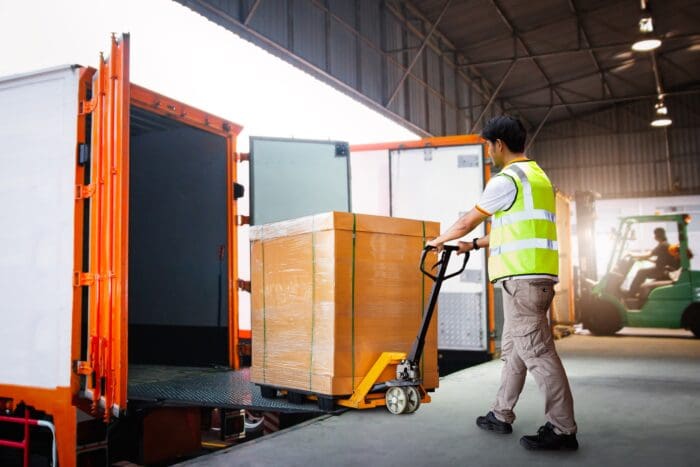






Though it’s never been easier fordirect-to-consumer (DTC) brands to break into new markets, establishing an internationalecommerce supply chain adds an extra level of complexity.
From the types of products you can sell and transport overseas to additional costs ofshipping internationally, there is much more involved in inbound and outbound logistics when building a global brand.
Here is an overview of what internationallogistics operations involve.

If you’re looking to expand into new markets, you will need to evaluate your currentphysical distribution of goods. For instance, if you’re storing inventory and shipping orders from a single warehouse location in your home country, you will have to calculate how much it will be to ship an international order overseas (taking landed costs into consideration).
There are several options here: you can still ship international orders from your home country, but you might want to move or expand into a warehousing location that will reduce shipping costs to reach the border before it gets sent overseas.
Or, if you’re seeing a large volume of orders from a different country, you can store some inventory in afulfillment center within that country and have orders picked, packed, and shipped from there.
Global fulfillment reduces many common customs and tariff issues since inventory is already stored within the country and can be shipped domestically.

Depending on your budget and delivery timelines, you can choose from different modes of transportation to carry your goods to the customer: parcel orfreight shipping, and air, sea, or ground shipping. To make the right decision, you have to consider time, cost, and reliability of each and determine what works for your margins.
Based on where you ship from and where you’re shipping to, several modes of transportation are often involved in delivering an order to an international destination — especially if you’re dealing with cross-border shipping.

As the shipper, you send goods to freight forwarders. They liaise with multiple carriers to find the best shipping options (via freight forwarding). Next, the goods are loaded onto trucks, planes, or ships and sent on their way to the end customer. At the destination port, after customs clearance, the goods are unloaded and transported to a specific customer address.
The transportation process for international orders can get tricky. Delivery times vary, depending on where you’re shipping to, and are often slow, since orders are being shipped to another country to different governing bodies and sometimes via several modes of transportation.
To make sure all goes smoothly, double check shipping documentation and the product that you’re shipping meets the country’s trade rules and regulations.
Lastly, it’s important that you make estimatedlast-mile delivery times and any duties they will incur clear with your customers, and then communicate with your customers on any order updates as they wait for their package to arrive.

Withglobal shipping, you will deal with additional fees, including customs andimport duties (taxes). An import duty is a tax placed on imports by customs authorities in the destination country of the shipment. These duties vary by country and are dictated by the value of the goods being imported.
All global orders need to be cleared through customs of the country they are entering. This involves quite a bit of paperwork, in which you must include the right details (e.g., tariff codes, dollar value, and product descriptions), so orders don’t get held up.
As the shipper, you are responsible for communicating these additional fees to your customers. If a customer is not aware upfront of the additional duties they will have to pay to receive their package, they may never claim it and you are liable for packages that get held up at customs.
That’s why some ecommerce brands chooseDDP shipping (delivery duty paid), in which the seller takes responsibility for all risk and fees of shipping goods until they reach their destination. This way, you won’t risk orders getting sent back when a consumer refuses to pay additional duties and fails to receive the package when it enters their destination country.
WhatsApp us